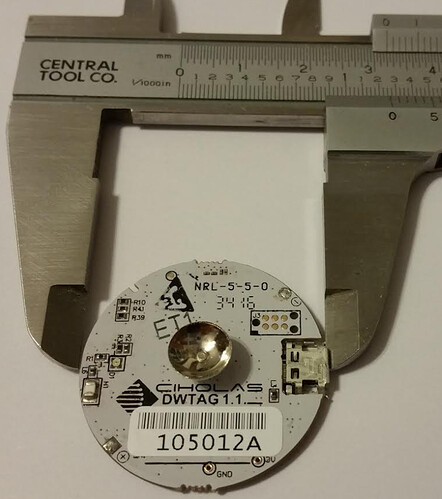Hi I have a couple DWM 1001 dev boards and I am trying to setup a localization for an indoor drone environment. I wrote a ros node which uses the Decawave API. It works fine, but I wanted to ask if there is a way to increase the frequency of the system. I currently get position update at 10hz. It would be great to get position updates and/or distances to anchor at higher frequency.
Hi Cristoph,
The maximum update rate of 10Hz is directly related with the firmware architecture and its TDMA scheme. It cannot be modified.
Thanks
Yves
Dear Christoph,
I bought 12 DWM1001 and I will soon test them with ROS, but from the very beginning I had the same question in my mind: is it possible to increase the frequency over 10 Hz? As 10 Hz is too low to localize a quadrotor or a car.
I know that it cannot be done using the firmware distributed with those devices, but I also know that, at least in principle, that firmware can be simplified in order to increase the frequency.
Have you tried modifying the firmware? or have you found any other guy who tried to do that?
Thanks,
Luca
Luca, I don’t know what makes you believe that 10 Hz is too low to “localize” a drone?
A lot of past research has shown quite the opposite. It will however depend on your requirements to dynamics and closed-loop position accuracy.
With a proper estimator running at a higher frequency on the drone which utilizes the accelerometer and gyroscope you should be able to achieve +/- 10 cm position hold or low-speed position control with only 10 Hz position measurements from the DWM1001 system.
The main bottleneck leading to the 10 Hz limitation is the low duty cycle rules of the low-band channels in Europe which dictates a maximum of 18 seconds air-time per minute (i.e. 300 ms pr. second). More information can be found in APS016. This requirement is enforced by the PANS library and software, but if you are in a controlled environment or if you were to use the high-band channel (channel 5) then you would be able to run the TDMA at a faster frequency, but this requires that you implement it in firmware yourself.
Best regards
Thomas Jespersen
I completely agree with you, it was my mistake selecting this devices.
The idea was to substitute an optoelectronic system, having good accuracy and sufficiently high measurement rate, so that the localization can be considered as ideal. This imply that no filter should be used.
On the other side, I was aware of the 10Hz limitation, but I thought that the devices were open (source code available). They have been selected as a way to speed up the experimental activity. Unfortunately, reimplementing the firmware is completely orthogonal to speed up the experimental activity.
Regards,
Luca Bascetta
If you want a fast drone location system, we (Ciholas) can supply that. Our current product is capable of 3400 locates per second. That could be 3400 tags at 1 Hz, or 34 tags at 100 Hz, or even 17 tags at 200 Hz. We do not limit the beacon rate and we have actually used rates as high as 240 Hz in some deployments.
Going faster than you need to allows smoothing an averaging the results to improve the precision. So, for example, a 200 Hz tag smoothed to 20 Hz output is about 3 times more precise.
For a typical large room, say 100 m^2 size, an array of 8 to 10 anchors on the ceiling will do a good job tracking Higher ceilings help, say 5 m high. I don’t know you intended service volume, so this may need adjustment.
Our system has no upper bound on the number of anchors you can use in the space. As you add anchors, the precision increases. For example, we installed 55 anchors in a basketball arena and it had a position noise well under 1 cm for single tag beacons, and if you averaged 10 hits, it was about under 3 mm.
Our system is FCC and CE compliant, and operates on channel 5. Our web shop:
DWEWTH101 are the anchors. A passive injector can power 12 in a chain (saves a ton of wiring). DWTAG100 are the tags.
We have sold tags to drone users before, even being used in a theatrical production. To lighten the tag, they take the battery and plastic case off leaving a 3 gram PCB and antenna, and power the tag from the drone. The naked PCB works, but it can be damaged in drone crashes. Here’s what it looks like on the inside, a 32 mm disc with antenna in the middle for opitimal pattern:
Note that regulations generally limit drone use of UWB to indoor environments.
Mike Ciholas, President, Ciholas, Inc
3700 Bell Road, Newburgh, IN 47630 USA
mikec@ciholas.com
+1 812 962 9408
